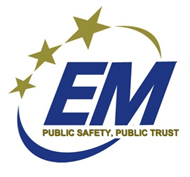This content was published: May 16, 2011. Phone numbers, email addresses, and other information may have changed.
Disasters highlight need for emergency management
Photos and story by Abe Proctor
The sheer scale of the overlapping catastrophes in Japan – first earthquake, then tsunami, fire and nuclear meltdown – underscored the need for preparedness and close, organized collaboration between different emergency response agencies. Closer to home, the recent tornadoes in the southern United States drive home the same point.
Fortunately for us here in Oregon, the Emergency Management Program at the Cascade Campus is teaching students to do just that.
“Emergency managers are involved in every stage of a disaster,” said Carol Bruneau, chair of the Emergency Management department, “starting even before the disaster occurs.”
Bruneau explained that proper emergency management is a dynamic and evolving process that goes far beyond coordinating the response to a disaster. The first and perhaps most important component is preparedness and preparation, she said – it’s hard to respond effectively when you lack the appropriate tools and training. Community outreach and preparedness are also crucial; the more information an average citizen has, the better they are able to help themselves and others.
When a catastrophe strikes, whether natural or man-made, emergency managers fill the crucial role of orchestrating the actions of a whole range of first-responders – from fire and medical personnel to law enforcement and beyond. But the aftermath of an emergency, Bruneau said, is also a critical period. Careful assessment of the emergency response can underscore what was done right, and what needs to be improved.
“Mitigation and lessons learned are a big part of the job,” Bruneau said. “It’s important to carry those lessons forward so that we’re better prepared the next time around.”
The PCC program offers both a two-year Associate’s degree or a one-year certificate in Emergency Management. Requirements from the Federal Emergency Management Agency (FEMA) are embedded in the program’s coursework, ensuring that students meet the benchmarks for their eventual emergency management employment, whether local, state, or federal.
In addition to their coursework, students are required to get involved outside of class by becoming part of local CERTS, or Community Emergency Response Teams. CERTS help to educate and equip private citizens to be able to help themselves and others in the event of an emergency. Bruneau said her students also volunteer with organizations like the Red Cross, and serve in internships with first-response agencies in the area such as FEMA and local fire protection districts.
Although one might think that emergency management jobs could be scarce – after all, disasters are relatively rare occurrences – Bruneau said that since the Sept. 11 terrorist attacks, the field has grown tremendously. In fact, U.S. News and World Report ranks “emergency management specialist” among its 50 Best Jobs for 2011, and a recent CNN report ranked emergency management in the top 10 emerging fields.
Bruneau said that the Sept. 11 attacks prompted organizations large and small in both the public and private sectors to add emergency management personnel to their payrolls. The City of Portland, for example, for decades had one person tasked with emergency management responsibilities; later, emergency management functions became primarily the responsibility of the Fire Bureau. Now the city maintains an Office of Emergency Management with a staff of about 20 people. Most medium- to large-sized cities now have emergency management offices, she said. But even more striking is the field’s growth in the private sector.
“What we have seen since 9/11 and (Hurricane) Katrina is lots of growth in the private sector,” she said. “Big companies often have their own emergency management people, especially those with operations in many locations. And it’s not just profit centers – places like hospitals and large universities are also hiring emergency managers.”
One of the reasons for this growth is the need to maintain business continuity and mitigate economic losses in the event of a major disaster. The sooner a business is able to resume operations after a disaster, said Bruneau, the less damage is done to its bottom line. In many cases, businesses that are able to bounce back quickly are able to play a role in the larger community’s recovery.
While the renewed interest in emergency management in recent years will help to save lives, Bruneau noted that we will never be perfectly prepared for a disaster, nor completely able to prevent or mitigate its impact.
“We’re never going to be able to overcome the forces of nature,” she said. “It’s about how many people we can save, how much social and economic continuity we can ensure.
“What we can do is to be as prepared as possible.”
